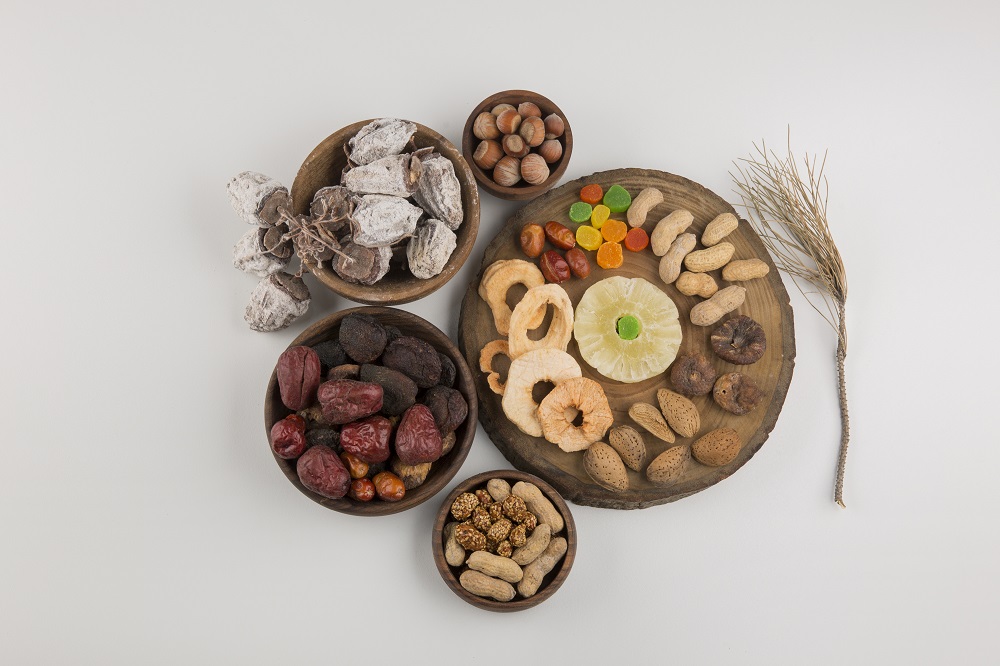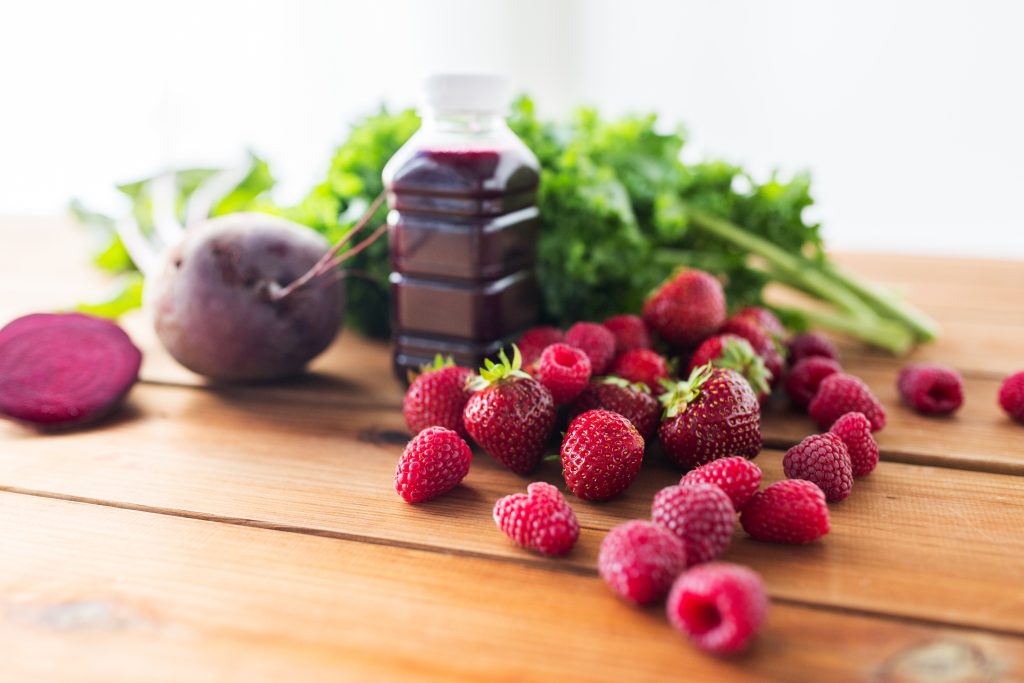One of the first pieces of advice you’ll be given after discovering that you’re prone to calcium oxalate stones is to avoid high-oxalate foods. This advice can be confusing since oxalates are found naturally in many popular foods. What’s more, oxalates are abundant in many healthy foods. However, many nutritious foods that would otherwise be considered great for achieving a balanced diet could be harmful for people who are vulnerable to oxalate stones because of the way they bind to minerals in the kidneys to form painful calcium-oxalate crystals. Here’s a look at foods high in oxalate to avoid if you’re looking for tips on how to prevent oxalate stones.

How Do You Know If You Have Oxalate Stones?
1. Nuts
Generally, most all nuts should be avoided or at least severely limited if you’re seeking tips for how to prevent oxalate stones. Some nuts are worse offenders than others. According to a 2020 report looking at the impact of nut consumption, Brazil nuts, almonds, and pine nuts actually contain nearly twice as much soluble oxalate compared to peanuts, pistachios, and chestnuts. How do you know if you have oxalate stones caused by your love of nuts? It can be hard to pinpoint the cause of stones because they can form over the course of weeks, months or even years. However, people who consume large amounts of nuts and experience stones should consider testing if cutting out nuts helps stop the recurrence of stones by reducing oxalate excretion in their urine.
2. Rhubarb
Many people are surprised to learn that rhubarb is one of the foods high in oxalate. However, cooked rhubarb can have oxalates reduced significantly when compared to raw rhubarb. One study found that boiled rhubarb cooked with milk can have its oxalate levels reduced by more than 70%.
3. Soy
This next piece of news may make you want to toss out your tofu! People on plant-based diets who struggle with oxalate stones should be aware that most soy products are extremely high in oxalates. Cutting out or reducing soy can be a tip for how to prevent oxalate stones if your diet relies heavily on this one food. A single small serving of tofu alone could have up to 300 milligrams of oxalates. Soy milk and yogurt also have high levels in each serving. If you’re wondering what to drink for oxalate stones to replace soy milk, oat milk can be a good low-oxalate alternative.
4. Potatoes
While a baked potato may seem like a bland meal item that won’t stir up issues, this starchy favourite is packed with oxalates. One large potato can easily contain 100 milligrams or more of oxalates. However, you may be able to steer clear of stones even if you love a potato. By skipping or removing all the skin, you can avoid a major portion of the oxalates in a baked potato.

5. Beets
Beets are hard to beat when it comes to foods high in oxalate. With more than 150 milligrams of oxalates in a cup of beets, this is one of the worst vegetables for people with oxalate stones. Ultimately, indulging in some tasty beets may not be worth seeing red because of the potential oxalate stone challenges.
6. Raspberries
Juicy, sweet raspberries are hiding a dark secret behind their wholesome appearance. Raspberries have some of the highest oxalate concentrations in the fruit world. One cup has nearly 50 milligrams of oxalates. The good news is that you can indulge in blackberries, blueberries, and strawberries as alternatives because they are all lower oxalate fruits.
8. Navy Beans
Here’s another one that might disappoint some people who eat a plant-based diet. Navy beans are often staples of vegetarian and vegan diets due to their abundant fiber and protein. However, just a single cup of these wonder beans could contain up to 160 milligrams of oxalates.
9. Teas
Scratch teatime off the schedule if you’re collecting tips on how to prevent oxalate stones. Most popular teas are dripping with oxalates. Black teas generally contain the most oxalates. However, white, and green teas aren’t far behind. If you’re wondering what to drink for oxalate stones instead of tea, some warm water with a few drops of fresh-squeezed orange or lemon juice can be a great way to enjoy the comfort of a hot mug. The citric acid found in lemons and oranges is believed to help dissolve oxalate stones naturally. What some say may help with oxalate stones for some people is flushing daily with citrus-infused water.
10. Dates
Overdoing it with dates can leave you with a date with an oxalate stone. Many people eat dates for their high fiber content. However, above-average oxalate levels and the fact dates are high in sugar should make dates a food that is limited.
11. Spinach
Spinach can put your kidneys into a tailspin if you’re prone to developing stones. With 600mg to 1,000 milligrams of oxalates in each cup of spinach, this leafy green is at the top of the list of vegetables to avoid for oxalate stones. Does cooking spinach reduce oxalates? Yes, boiling spinach could potentially reduce its oxalate levels by up to 90%.
12. Chocolate
What helps with oxalate stones if you have a sweet tooth? You may need to limit your snacks. Indulging in chocolate regularly could be one way to facilitate oxalate stones. That’s because chocolate is considered a high-oxalate food. When researchers tested 34 dark chocolate samples from around the world, they found that the oxalate content in various products ranged from 155 milligrams to 485 milligrams per serving. But of course, the serving size means a lot, so it is best if consume chocolate that you just consume a small amount. If you want to indulge occasionally, consume a small amount with dairy like milk or ice cream as that helps the oxalates to combine with calcium in the stomach and intestines and ultimately passing in your stool before making its way to the kidneys.
14. Salt
All your good behavior with avoiding oxalates may not matter if you’re following a high-sodium diet. Salt can tip you over the edge if you’re indulging in high-oxalate foods that are on the banned list. Some people who might not be bothered by eating high-oxalate foods under normal circumstances may become vulnerable to oxalate stones when salt is thrown into the mix. A high salt diet can increase the amount of calcium lost in urine, which can lead to oxalate stones. Several studies have successfully shown that a reduction in salt consumption can reduce calcium excretion, and thus help reduce reoccurrence of oxalate stones.
15. Wheat Bran
You might want to rethink that healthy wheat bran you’ve been enjoying in your cereal bowl or homemade muffins. When researchers looked at oxalate concentrations in whole-grain products, they found that wheat bran had the most oxalates. What might surprise you most of all is that unrefined cereals had higher oxalate levels compared to refined grain cereals. This may mean that oxalates in whole grains are primarily concentrated on the outer layers that are sloughed away during processing.
16. Buckwheat
People who are into eating healthy love buckwheat as a gluten-free, high-fiber filler in soups and hot dishes. While buckwheat has amazing benefits for lowering cholesterol and stabilizing blood sugar, it’s also infamous for being one of the surprising foods high in oxalate. Consuming just one cup will cause you to take in roughly 135 milligrams of oxalates.
17. Corn Grits
Rethink this Southern favorite if you’re looking for meal tips for how to prevent oxalate stones. A steaming cup of corn grits contains nearly 100 milligrams of oxalates. If the thought of going without your favorite grits really grinds your gear, you can consider making grits with milk to try to mitigate oxalate levels.
19. Okra
While okra is often overlooked on lists of foods high in oxalate, this versatile favorite is high up there compared to other vegetables to avoid for oxalate stones. Another thing that’s surprising about okra is that it’s technically a fruit even though most of us think of it as a vegetable. Just one cup of okra can contain more than 100 milligrams of oxalates.
20. Miso Soup
You might think that a hydrating bowl of miso soup could be what helps with oxalate stones when you’re trying to flush out your system. However, it’s important to remember that the broth in miso soup is made with fermented soybean paste. You could easily consume more than 100 milligrams of oxalates in a single cup of miso!
